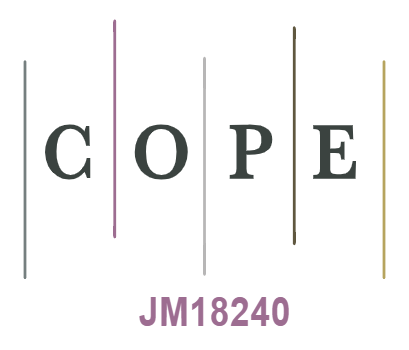Prevalence and Clinical Characteristics of Depression among Elderly Patients Attending Primary Health Care Centers in Diyala Governorate
DOI:
https://doi.org/10.32007/jfacmedbagdad.2034Keywords:
Depression, Elderly, , Primary Health Care Centers, , Diyala governorate.Abstract
Background: Depression is one of the most common mood conditions among the elderly, which is linked to severe consequences such as difficulty in concentration and mood disturbances, followed by a lack of interest in social activities, apathy, pessimism, and changes in appetite and sleep.
Aim of the study: To determine the prevalence and clinical characteristics of depression and the associated factors among 60-year-olds and over.
Methodology: A descriptive cross-sectional study conducted on a group of 218 patients attending selected primary health care centers (PHCC) in Diyala governorate from Al-Khales and Baquba first sectors from first of September 2020 till first of April 2021. A direct interview was conducted by the researcher. Depression in the studied group was measured using the Arabic version of the short form of Geriatric Depression Scale (GDS). Socio-demographical factors were also inquired about in this study.
Results: The prevalence of depression among the study participants was 63.3%. There was a statistically significant association between depression and gender (higher in females 69.2%), marital status (in widowed 84.8%), current residence (93.3% in those living alone), and source of monthly income (78.1% in those on financial assistance), medical illnesses (70.2%), and past history of depression (71.3%).
Conclusions: Depressive symptoms are prevalent among elderly patients attending primary health centers in Diyala Governorate and are associated with female gender, being a widow, living alone, financial insecurity and chronic illnesses.
Received Dec. 2022
Accepted May 2023
Published Jul. 2023
Downloads
References
Barcelos-Ferreira R, Nakano EY, Steffens DC, Bottino CM. Quality of life and physical activity associated to lower prevalence of depression in community-dwelling elderly subjects from Sao Paulo. Journal of affective disorders. 2013 Sep 5; 150(2):616-22.
Neves RT, Laham CF, Aranha VC, Santiago a, Solimar F, Lucia MC. Envelhecimento e doenças cardiovasculares: depressão e qualidade de vida em idosos atendidos em domicílio. Psicologia Hospitalar. 2013Jul; 11(2):72-98.
https://doi.org/10.1016/j.jad.2013.02.024
Steffens DC, Hays JC, Krishnan KR. Disability in geriatric depression. The American Journal of Geriatric Psychiatry. 1999 Dec 1; 7(1):34-4
https://doi.org/10.1097/00019442-199924710-00005
American Psychiatric Association. (2022). Depression. In Diagnostic and statistical manual of mental disorders (5th ed., text rev.). https://doi.org/10.1176/appi.books.9780890425787.x03_Bipolar_and_Related_Disorders.
Federal G. Programa mais médicos [Internet]. Brasília: Governo Federal. 2017.
Barcelos-Ferreira R, Nakano EY, Steffens DC, Bottino CM. Quality of life and physical activity associated to lower prevalence of depression in community-dwelling elderly subjects from Sao Paulo. Journal of affective disorders. 2013 Sep 517(1): 37-49.
Alyasiri AR. Depression among Elderly Patients/Mosul City. Al- Kindy College Medical Journal. 2017 13(2):34-9.
Ghazwani EY, Al-Musa HM. Depression among elderly subjects attending primary health care centers in Abha City, Kingdom of Saudi Arabia. Middle East Journal of Family Medicine. 2013
https://doi.org/10.5742/MEFM.2014.92408 2(4):35.
Basta M, Micheli K, Simos P, Zaganas I, Panagiotakis S, Koutra K, et al. Frequency and risk factors associated with depression in elderly visiting Primary Health Care (PHC) settings: Findings from the Cretan Aging Cohort. Journal of Affective Disorders Reports. 2021 Apr 139(2):185.
Padayachey U, Ramlall S, Chipps J. Depression in older adults: prevalence and risk factors in primary health care sampling South African family practice. 2017 March 17
https://doi.org/10.4102/safp.v59i2.4536 59(2):61-6.
Sherina M, Afiah Mn, Shamsul A. Factors associated with depression among elderly patients in a primary health care clinic in Malaysia. Asia Pacific Family Medicine 2003 2: 148-152.
Schwenk TL, Coyne JC, Fechner-Bates S. Differences between detected and undetected patients in primary care and depressed psychiatric patients. Gen. Hosp. Psych. 199618: 407-15.
Chong MY, Chen CC, Tsang HY, Yeh TL, Chen CS, Lee YH, et al. Community study of depression in old age in Taiwan: prevalence, life events, and socio-demographic correlates. The British Journal of Psychiatry. 2001 Jan 178(1):29-35
Majdi MR, Mobarhan M G, Salek M, Taghi M, Mokhber N. Prevalence of depression in an elderly population: A population-based study in Iran. Iranian Journal of Psychiatry and Behavioral Sciences. 2011 Jan 15(1):17-21.
Gullich I, Duro SM, Cesar JA. Depression among the elderly: a population-based study in Southern Brazil. Revista Brasileira de Epidemiologia. 2016 Oct 19:691-701.
Tsan JY, Zeber JE, Stock EM, Sun F, Copeland LA. Primary care- mental health integration and treatment retention among Iraq and Afghanistan war veterans. Psychological services. 2012 Nov 9(4): 336.
Miller MD. Recognizing and treating depression in the elderly. Adapted from Diagnosis and Treatment of Late-Life Depression: Making a Difference. Am. Assoc. Great. Psych. 1996:17.
Al-Salmani A, Juma T, Al-Noobi A, Al-Farsi Y, Jaafar N, Al- Mamari K, et al. Characterization of depression among patients at urban primary healthcare centers in oman. The International Journal of Psychiatry in Medicine. 2015 Jan; 49(1):1-8.
https://doi.org/10.2190/PM.49.1.a
Evans M, Mottram P. Diagnosis of depression in elderly patients. Advances in psychiatric treatment. 2000 Jan; 6(1):49
Downloads
Published
Issue
Section
License
Copyright (c) 2023 Abeer Yaseen, Mushtaq Talib

This work is licensed under a Creative Commons Attribution-NonCommercial 4.0 International License.











 Creative Commons Attribution 4.0 International license..
Creative Commons Attribution 4.0 International license..


